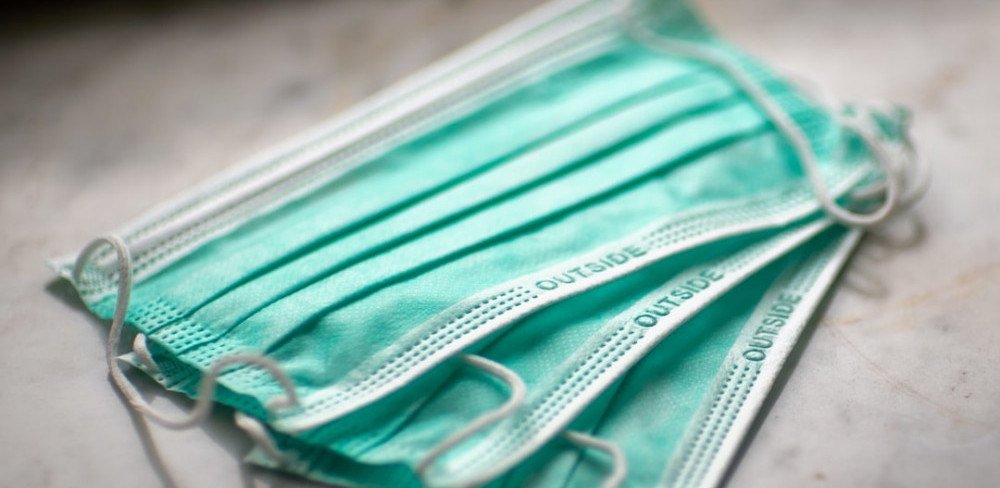If you are new to the idea of wearing a face mask when you are out in public, you are not alone. You may be asking questions like, “What kind of mask should I be wearing?” or, “What is the proper way to wear a face mask?”. I’ve been answering these questions a lot lately, so I thought it may be helpful to put out some information that may help answer these questions on the blog.
All masks are not created equal
There are a few types of masks that we want to be familiar with when we are talking about routine face masks that are being worn as protection during the pandemic. I am specifically going to discuss the cloth mask, the surgical mask, and the N95 (respirator) mask.
- N95 (respirator) mask
- This type of mask is designed to protect the wearer from airborne particles. When properly fit, it forms a seal around the nose and mouth of the wearer. As its name alludes to, this mask is intended to filter at least 95% of airborne particles. In the healthcare setting, the wearers of these masks go through a special, “fit testing” to ensure a proper seal is obtained with its use. Without the knowledge of a functional seal, the wearer will not know if the mask is providing the protection that it is designed for. As of the date of this posting, the CDC maintains, via their website, a recommendation that N95 respirators not be used by the general public, because they are considered critical supplies and should remain reserved for health care workers and medical first responders[1].
- Surgical mask
- This type of mask is a disposable, rather loosely fitting mask that is designed to protect the wearer by preventing large particle sprays or droplets from reaching the nose and mouth[2]. A surgical mask will not protect the wearer from smaller particle sprays that can come from a cough, sneeze, or the speech of a person nearby. This type of mask will also help to prevent the wearer from spreading their own respiratory droplets to others by helping to contain the small particles that the wearer omits when he or she coughs, sneezes, or even talks.
- Cloth mask
- A face covering made of two or more layers of tightly woven cloth material. This should cover the nose and the mouth, fitting snug under the chin to prevent water droplets emitted by the wearer from escaping. The idea behind the cloth mask is that my mask will protect you, and your mask will protect me. This helps to prevent the spread of the virus by those who may not be aware that they are infected.
Ensure a proper fit
While wearing a cloth mask, ideally, ear loops or head ties will be used to keep the mask securely in place. You will want to ensure that the mask covers the nose and mouth, and fits under the chin. The mask should fit snugly to the sides of your face while still allowing you to breathe without difficulty[3]. If the face covering hangs freely, like a bandana, then the desired droplet barrier will not be achieved. Water droplets will be able to escape as the wearer coughs, sneezes, and speaks.

Please don’t wear the mask with your nose exposed, or pulled down under your chin. All that is doing, is showing me that you have a mask. While I’m glad that you thought enough to bring your mask, it is not the thought that counts here. If you are not wearing it properly, you are potentially exposing everyone around you to something that you may not be aware that you are carrying. There may be some situations, however, where wearing a mask is not possible. If you are concerned about special circumstances, If you are unable to wear a mask properly, check out the CDC’s information on feasibility and Adaptations[5].
Proper application and removal
It is important to wash your hands with soap and water, or use hand sanitizer before and after putting on or taking off your mask. Handle the mask only by the ear-loops or head-ties. Avoid touching the cloth on the inside or outside. If you accidentally touch the mask, re-wash/sanitize your hands. If your mask becomes visibly soiled, or gets wet, you’ll want to replace it with a fresh one[4]. A cloth mask should be washed after each use.
Following CDC guidelines
The CDC recommends that masks be used when you are in a public setting, and when you are around people who are not members of your immediate household[5]. You can find loads of information, from instructions to make your own cloth mask, to recommendations about cleaning one, all on the CDC’s website. They have set up guidelines regarding the use of masks that are backed by the latest research.
Frequent and prolonged wearing may take some getting used to
It’s different, it can be uncomfortable at times, and we all wish that we didn’t need them. When it is hot and humid out, or you are being physically active, it can be especially aggravating to keep that mask on, but we need to. So many front-line workers have been wearing them for countless hours, through entire shifts, every day. So, please don’t be upset about having to wear one for 30 minutes at the grocery store. The more often you wear one, the easier it will become. It may take some getting used to, but let’s all do our part to keep each other safe and healthy.
Resources:
1. Centers for Disease Control and Prevention. Cloth face coverings: questions and answers. April 4, 2020. Accessed August 3, 2020. https://www.cdc.gov/coronavirus/2019-ncov/prevent-getting-sick/cloth-face-cover-faq.html
2. US Food and Drug Administration. N95 Respirators, Surgical Masks, and Face Masks. June 7, 2020. Accessed August 3, 2020. https://www.fda.gov/medical-devices/personal-protective-equipment-infection-control/n95-respirators-surgical-masks-and-face-masks#s3
3. Centers for Disease Control and Prevention. How to wear masks. July 6, 2020. Accessed August 3, 2020. https://www.cdc.gov/coronavirus/2019-ncov/prevent-getting-sick/how-to-wear-cloth-face-coverings.html
4. Mayo Clinic. COVID-19: How much protection do face masks offer?. July 17, 2020. Accessed August 3, 2020. https://www.mayoclinic.org/diseases-conditions/coronavirus/in-depth/coronavirus-mask/art-20485449
5. Centers for Disease Control and Prevention. Considerations for wearing masks. July 16, 2020. Accessed August 3, 2020. https://www.cdc.gov/coronavirus/2019-ncov/prevent-getting-sick/cloth-face-cover-guidance.html#feasibility-adaptations


